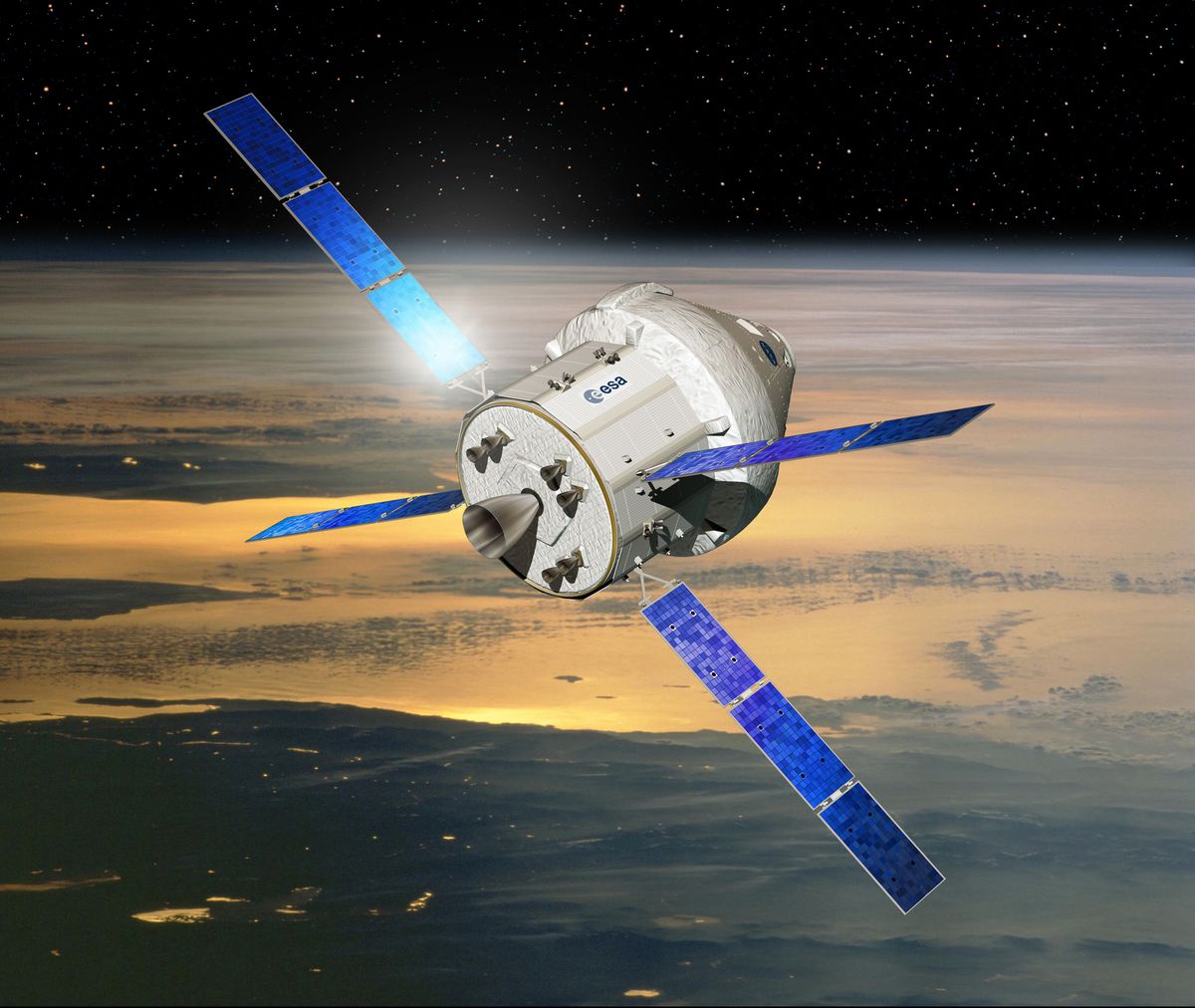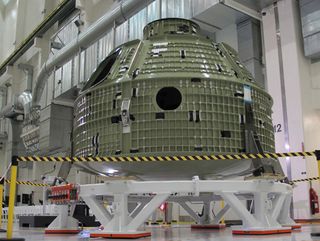NASA's Orion Space Capsule to Get European Boost

LONDON — The deep-space flights of NASA's next manned spaceship will be powered by a European propulsion system that uses space shuttle rocket engines, officials say.
The European Space Agency (ESA) will provide the service module for NASA's crew-carrying Orion space capsule, which is currently under development. The service module will provide propulsion, avionics, heat control and energy from solar arrays, and it will also store water, oxygen and nitrogen for life support.
Orion's service module, which ESA expects to cost several hundred million dollars, is being delivered as an in-kind contribution for International Space Station operations for the period 2017 to 2020, officials said.
NASA's new crewed spaceship
NASA wants Orion to carry humans deeper into the solar system than they've ever been before, with exploration missions to such deep-space destinations as asteroids and Mars. The first crewed flight of the capsule, which will blast off atop NASA's huge Space Launch System rocket, is slated for 2021.
Orion is NASA’s first new spacecraft since the now-retired space shuttle, which was designed 40 years ago. For now, the ESA-NASA agreement is for one service module for Orion’s planned unmanned test flight in 2017. [Photos: NASA's Orion Space Capsule]
"The preliminary design review is in July next year," Nico Dettmann, an ESA Orion team member, told SPACE.com. "Our next meeting is in January for the design analysis cycle meeting two."
Sign up for the Live Science daily newsletter now
Get the world’s most fascinating discoveries delivered straight to your inbox.
A preliminary design review, or PDR, is a major milestone for spaceflight projects, allowing managers to check a spacecraft's design progress. After the PDR comes the critical design review (CDR), which can deem the design complete and pave the way for construction to begin. Orion's CDR is planned for early 2015.

New goal for ESA
The Orion service module will need to be safe enough to fly astronauts — a new goal for ESA, which has never developed a rocket engine for human spaceflight.
ESA operates an unmanned cargo vessel called the Automated Transfer Vehicle (ATV), which has made three supply runs to the space station since 2008. European aerospace firm EADS Astrium builds the ATV, and it will be ESA's prime contractor for the Orion service module as well, said Dettmann, who is also ESA's ATV program manager.
ESA will use ATV rocket engines and other technology for the Orion service module's main propulsion system, Dettmann said. But the module will incorporate a space shuttle orbital maneuvering system rocket engine, too, he added. [Photos: NASA's Space Shuttle Fleet]
The Europeans will follow NASA human spaceflight standards, and they will also use NASA facilities for testing when the appropriate facilities are not available in Europe.
ESA started developing its Orion service module concept in March 2011 and began discussing its ideas with NASA a few months later. ESA achieved its system design review, which checks that the design will in principle enable the spacecraft to achieve its goals, this past September, Dettmann said.
Challenges of international collaboration
NASA welcomes international cooperation on many spaceflight projects, but such collaboration can pose some challenges.
One issue for foreign organizations working with the United States in the space arena is the U.S. government’s technology export laws, known by the acronym ITAR (for International Traffic in Arms Regulations).
Dettmann does not expect ITAR to be a problem, however.
"The ITAR constraints are more affecting if we tried to build something with U.S. components and we used them in a project that was not American," Dettmann said. "ITAR regulations are what they are, and we have to respect them."
NASA’s original Orion service module concept was designed with the help of the agency’s prime contractor for the capsule, Lockheed Martin Space Systems. ESA has evolved its design with the aid of NASA and Lockheed, but ESA will only work with the U.S. prime contractor through the U.S. space agency.
One outcome of going with the European concept is that the Lockheed-designed unfolding fan-like solar arrays have been dropped. European solar arrays will be used on the 2017 test flight.
Orion was originally called the Orion Crew Exploration Vehicle under NASA’s defunct Constellation program. After Constellation was cancelled by President Barack Obama, Orion became known as the Orion Multi-Purpose Crew Vehicle.
The member space agencies of ESA decided at their budget meeting — held Nov. 20-21 in Naples, Italy — to fund the Orion service module proposal. The United Kingdom Space Agency announced that week that it will give a one-off contribution of £16 million ($25.6 million) to ESA’s International Space Station participation.
The UK has not previously been involved in the ISS program or European human spaceflight. The UK’s funding will go toward communications and propulsion technology for the Orion service module.
"The British contribution is relatively small, and, like all ESA projects, the industrial setup is where each country may deliver certain equipment to be integrated at a system and subsystem level," Dettmann said. "It won’t be difficult to find a UK company to contribute to this program."
This story was provided by SPACE.com, a sister site to Live Science. Follow SPACE.com on Twitter @Spacedotcom. We're also on Facebook & Google+.












